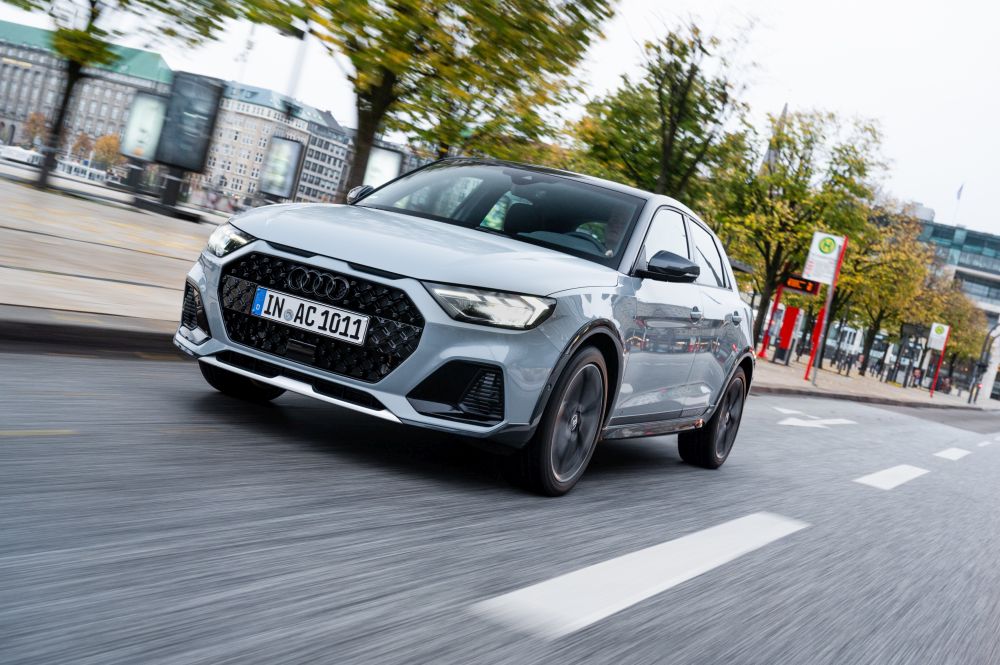It looks trendy and confident on the road, it leaves plenty of room for customization, and it offers top-of-the-line networking all around: the Audi A1 citycarver.
The most progressive model in the new A1 product line is at home in any environment: in the city, on country roads and highways and, thanks to its elevated body, even on unsurfaced roads.
Progressive and robust: concept and exterior design
The A1 citycarver is the most progressive model in Audi’s compact model series. It is based on the new A1 Sportback and has adopted the sporty, taut body line with the broad track and short overhangs. However, it has just over four centimeters (1.6 in) more ground clearance, which makes it easier to get in and provides an even better overview. Roughly 35 millimeters (1.4 in) of its new height are due to the modified suspension, which has a larger jounce travel. The large wheels contribute the remainder of the increase. The exterior of the A1 citycarver, which measures 4.05 meters (13.3 ft) in length, sports a robust, off-road look, the large, octagonal Singleframe is reminiscent of the Audi Q models. It gets by without a frame; its insert is a strongly sculpted honeycomb painted in matt black. There are two characteristic slots above the grille. The underbody protection coated in stainless steel paint accentuates its features, and the wheel arches and distinctive side sills on the sidewall sport attachments in a contrasting color. The rear bumpers echo the design of the front apron. Audi offers a selection of nine colors. Upon request, the roof dome can be painted in Mythos black, metallic or Manhattan gray, metallic to form a contrast to the body. This is a typical A1 design solution. The exterior can be customized even further with the black styling package. It bathes the attachments in the lower section of the body, which otherwise come in gray and a stainless steel paint finish, in deep black.
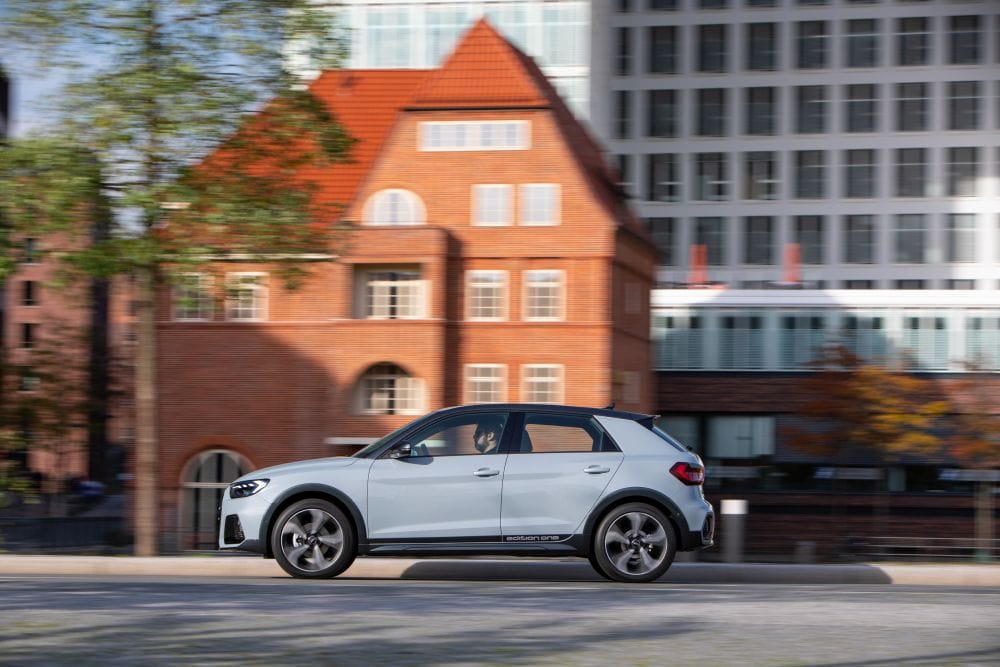
Spacious and modern: the interior
In the interior of the Audi A1 citycarver, even the rear passengers can enjoy plenty of head- and legroom. The luggage compartment normally provides a volume of up to 335 liters (11.8 cu ft). When the rear backrests are folded down, this increases to 1,090 liters (38.5 cu ft) up to the roof. The luggage compartment package, which features a net and a variable loading floor (optional), is a handy feature for everyday life in the city. The A1 citycarver features the most sporty interior in the compact class. The instrument panel is tilted toward the driver, and the standard digital instrument cluster and its cover form a unit with the air vents. The MMI display (optional) and the vent strip on the front passenger side are positioned on a surface with a black glass look. Individual design plays a central role in the interior concept of the Audi A1 citycarver. There are four equipment variants to choose from: basic, advanced, design selection and S line. Contrasting stitching on the covers is available from the interior advanced equipment variant and upward, while the S line offers combinations of fabric/synthetic leather or Alcantara/synthetic leather. The design selection includes the impressive contour/ambient lighting package. All equipment variants of the Audi A1 citycarver—from the sport seats (standard with the S line) to the LED headlights with dynamic rear turn signal lights—are based on the A1 Sportback. The brand’s most progressive compact model is geared toward young customers. This is also reflected in the color and material palettes. Upon request, the fresh mint and orange (new) colors emphasize the seat upholstery (with the advanced line). The accent surfaces on the air vents, the center tunnel console and the doors are painted in mint, silver-gray, orange, copper or structured gray (for the S line), while the application surface on the instrument panel is available in matt black, Ferrum gray or Diamond silver.
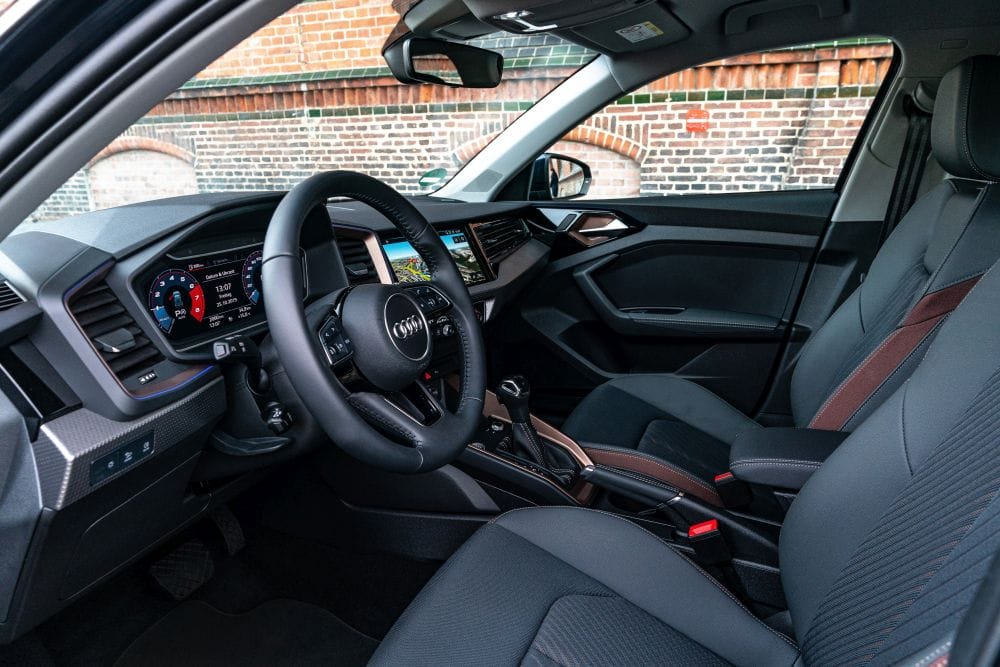
Digital display as standard: controls and displays
The A1 citycarver is fit for the digital future. Even the basic version is fitted with a fully digital instrument cluster, including a high-resolution 10.25-inch display that is operated via a multifunction steering wheel. The Audi virtual cockpit, which provides many more functions, is available as an alternative. The driver can switch between multiple views via the steering wheel.
Fully networked: infotainment and Audi connect
As regards infotainment, the MMI radio comes as standard. At the next higher level is its plus version with the 8.8-inch MMI touch display. If the customer orders either the preparation for MMI navigation plus or the top navigation system, the display has an even larger diagonal of 10.1 inches. All commands and requests, including free-form text search, are made via touch entry or voice control here. The navigation system makes intelligent destination suggestions based on previous journeys. Service provider HERE computes the route online with consideration of traffic conditions in a wide area.
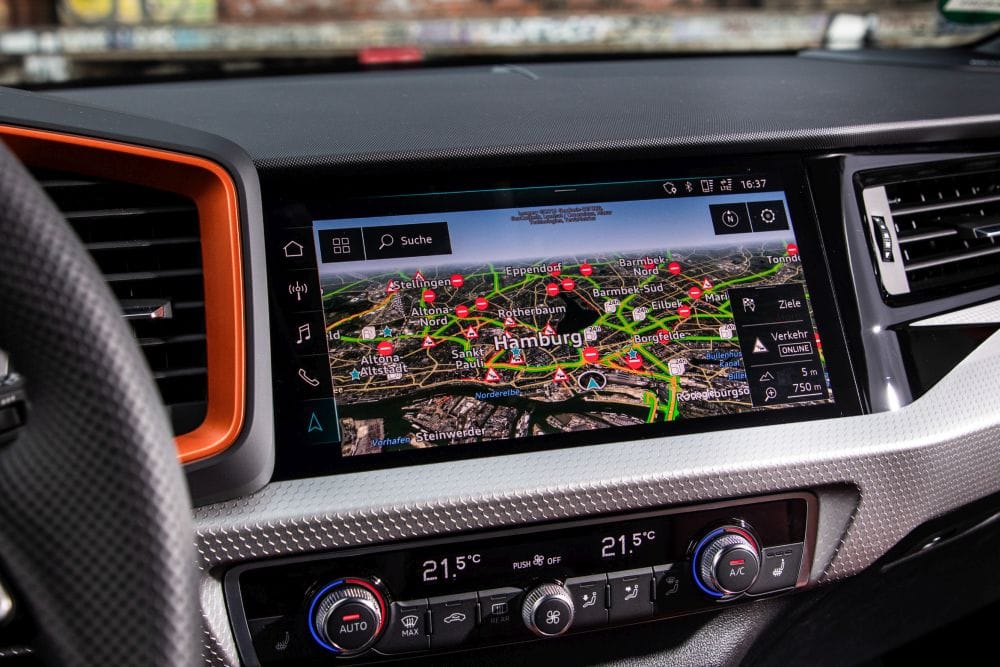
The interaction with the online services from Audi connect makes the MMI navigation plus even more attractive. These services include extended voice control with online requests, navigation with Google Earth™, traffic information online, parking information, traffic light information, Wi-Fi hotspot and hybrid radio. The free myAudi app connects the car with the customer’s smartphone. They can use it to transfer routes, special destinations and their calendar or to control the central locking remotely. The hardware of the A1 citycarver can also be connected all around. The Audi smartphone interface embeds iOS and Android smartphones in their native environment via Apple CarPlay or Android Auto and provides two USB ports, one of which uses the new USB-C standard. The Audi phone box connects the smartphone to the vehicle’s antenna and charges it inductively based on the Qi standard. The Bang & Olufsen premium sound system with 3D sound pampers the ears of demanding hi-fi fans. Just like the infotainment system, the driver assist systems of the Audi A1 citycarver reflect the state of the art. Audi pre sense front uses a radar sensor to detect critical situations in front of the vehicle. It is included as standard, as is the lane departure warning. Adaptive cruise control (optional) keeps the vehicle at the desired distance to the vehicle driving in front. The park assist, which is also optional, guides the vehicle into parallel and perpendicular parking spots.
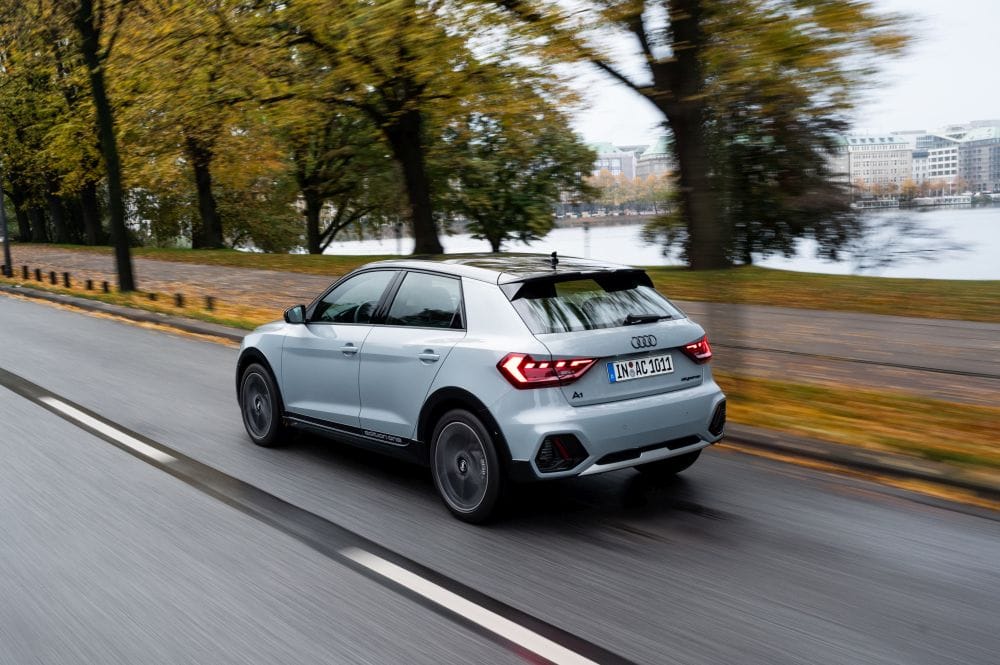
Two three-cylinders and one four-cylinder: the engines
The A1 citycarver will be launched with two three-cylinder TFSI engine variants, followed by a four-cylinder engine a little later on. Turbocharging, direct injection and a particle filter are standard. Depending on the engine variant and the customer’s wishes, the power is transferred to the front wheels by either a manual transmission or a seven-speed S tronic. If the vehicle is fitted with the Audi drive select dynamic handling system, the S tronic includes a freewheeling function in efficiency mode. Each engine captivates customers with its individual strengths. The main strengths of the threecylinder engines are its compact layout, the low weight of 88 kilograms and the low moved masses. The 1.0 TFSI with 70 kW (95 metric hp), which powers the A1 citycarver 25 TFSI is particularly efficient. In the more powerful performance level for the citycarver 30 TFSI it outputs 85 kW (116 metric hp). The 1.5 TFSI is a high-tech engine. Its cylinder on demand (COD) system shuts down two cylinders in moderate driving operation, and solutions like the iron-coated cylinder linings reduce interior friction. The 1.5-liter engine powers the A1 citycarver 35 TFSI with an output of 110 kW (150 metric hp).


